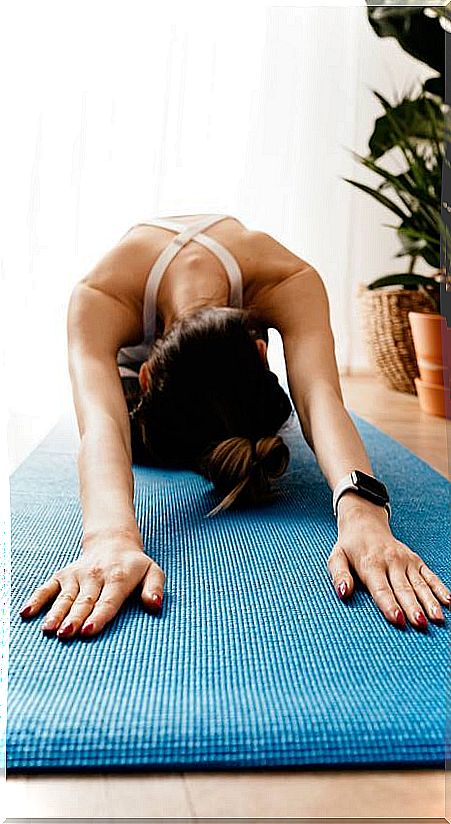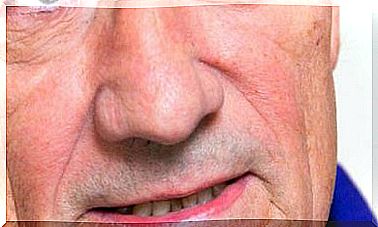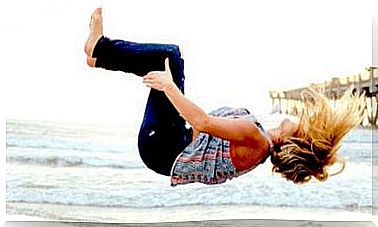Endometriosis: 6 Exercises To Relieve Pain
Treatment of endometriosis may be accompanied by lifestyle changes that improve symptoms. These exercises, recommended by Dr. Carmona, are a good support.

Feeling pain in the rule, say the specialists, is not normal. If we feel pain, something happens. Not attending to that pain is one of the causes that some gynecological disorders go unnoticed for a long time. A paradigmatic case is that of endometriosis, a chronic disease often underdiagnosed in which the pain can become so intense that it prevents normal life.
Endometriosis is characterized by the growth of the endometrium, the inner layer of the uterine womb, outside the endometrial cavity. It affects women of reproductive age and infertility problems are another of its symptoms.
Relieve pain in endometriosis
Pain occurs mainly during menstruation and ovulation, a continuous pelvic pain product of the body’s inflammatory response to the presence of endometrial cells where they should not be.
It is a pain that has been studied well by Dr. Francisco Carmona, author of Endometriosis: The guide to understanding what it is and how to take care of yourself (Ed. Grijalbo) and a specialist in the diagnosis and treatment of endometriosis and other benign gynecological pathologies. According to Dr. Carmona, not treating this pain can cause it to become generalized and become chronic over time.
The use of pain relievers and hormonal treatments are common in treating endometriosis, but there are also lifestyle measures that can be taken to reduce the intensity of pain. A diet that helps regulate the level of estrogen can be helpful in endometriosis. Physical exercise is also key, as long as it is not of great intensity.
Dr. Carmona himself also recommends some complementary therapies for chronic pain, such as acupuncture, mindfulness or mindfulness meditation, osteopathy and herbal medicine. Yoga is also highly recommended, for its combination of conscious physical exercise with relaxation and meditation techniques. In episodes of a lot of pain due to the period and endometriosis, yin yoga or restorative yoga is the most indicated.
Exercises to do at home
In general, moderate exercise is helpful in treating endometriosis for several reasons.
“When we exercise, the body produces its own painkillers and consequently induces well-being and relaxation that can improve the mood and depression associated with depression,” explains Dr. Carmona. In addition “it contributes to regulate the level of estrogens, reason why it also helps to maintain the disease controlled”.
Not only that. “Regular exercise stimulates blood flow, sends more nutrient-rich blood to painful areas, and makes patients noticeably better. And it can protect from pelvic muscle contractures, back muscle pain, and back pain. the joints “, adds the expert.
There are also relaxation and stretching exercises that can be helpful in relieving pain. In general, exercises that work the abdominal muscles and relaxation of the pelvic floor for a long time are recommended, but exercises that contract the pelvic area, such as Kegel exercises, and those that contract the abdominal area, such as hypopressive exercises.
Here are six easy exercises to do at home recommended by Dr. Carmona for pain relief in his book Endometriosis , with his recommendations for each pose and illustrations by Lyona.

1. Diaphragmatic breathing
By breathing involving the diaphragm and not just using the rib cage, our breathing becomes deeper. In addition to the relaxing effects that this type of breathing has, it has other benefits that are useful in endometriosis: it allows the ribs to expand and thus reduce the tension in the back muscles, from the neck to the tailbone.
Taking 5-10 full breaths every hour is recommended. Ideally, lie on the floor on your back, with your legs slightly bent and your chin inward. If you have trouble doing this type of breathing, try these exercises to release your diaphragm.
2. Visualization to relax the pelvic floor
You can do it in the same posture as diaphragmatic breathing and even combine them. It is especially helpful for women who feel pain during penetration. It is about relaxing the pelvic floor using these two images:
- Imagine how a stone falls into a pond and generates shock waves at the same time you feel the pelvic floor muscles relax.
- Imagine that your pelvic floor is an elevator : it is on the top floor, it goes down and, when it reaches the bottom, it opens its doors.
3. Hip and glute stretch
This stretch stretches the glutes and hip rotators. It also relieves lower back pain. Hold the stretch for at least 1 minute and do it at least once each day.
- Lie on your back on a mat or bed, with your knees bent and your feet flat on the floor or mattress.
- Place the heel of one foot on the knee of the other leg in a “4” with both legs.
- With your hand, gently push your leg at the knee to extend the stretch.
- Keep your head and shoulders relaxed on the floor and try to flatten your lower back so it doesn’t rise off the ground.
4. Stretching the groin
With this exercise we open the hips and stretch the pelvic floor muscles. You can do it on a mat or, like the previous one, on the bed.
- Lie on your back, on your back, and slowly bring your knees to your chest.
- When you feel comfortable, slowly spread your knees toward your shoulders. Keep your chin down and your shoulders relaxed.
- Stay in this position for a minute and take advantage of the diaphragmatic breathing. You can also incorporate the visualizations.
5. Stretching the hip flexor muscles
This exercise stretches the front of the hips, pelvis, belly, and chest. Do it first with one leg and then the other.
- Kneel on a folded mat or blanket.
- Take a step forward with one foot and rest a moment.
- Reach your arms to the sky and rest again.
- Push your hips forward, curving your back to open up so your belly is facing up.
- Hold the stretch for a minute by breathing slowly and deeply.
6. Global stretch
This pose allows you, each time you breathe, to expand the diaphragm and relax the pelvic floor. It is a very complete stretch.
- Sit on your knees, on your heels, and bring your torso forward until you rest your forehead on the ground. If you don’t arrive, put a cushion or yoga block so you can rest your head.
- Bring your arms forward and stretch them out. The chest goes to the ground.
- Hold the pose as you breathe slowly and deeply and try to visualize how you relax your pelvic floor muscles with each breath.









